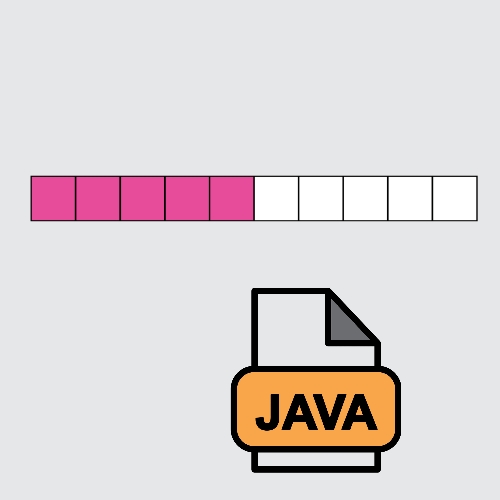In Java, an array is a data structure that stores a fixed-size sequence of elements of the same type. Arrays are useful for storing large amounts of data and can be of any primitive or reference type, such as int, String, or custom objects.
Key Concepts of Arrays in Java
1. Declaration: To declare an array, you specify the type of the elements followed by square brackets ([]).
int[] numbers; // Declare an integer array
String[] names; // Declare a String array
2. Instantiation (Initialization): You create an array using the new keyword followed by the type and size of the array.
numbers = new int[5]; // An array of 5 integers
names = new String[3]; // An array of 3 Strings
3. Array Initialization (Alternative Method): Arrays can also be initialized at the time of declaration using curly braces {}.
int[] numbers = {1, 2, 3, 4, 5}; // Initializes an array with values
String[] names = {“Alice”, “Bob”, “Charlie”}; // Initializes with values
4. Accessing Elements: Array elements are accessed using their index, starting from 0.
System.out.println(numbers[0]); // Prints the first element (1)
System.out.println(names[1]); // Prints “Bob”
5. Array Length: The length of an array can be accessed using the length property.
int length = numbers.length; // Returns the size of the array (5)
6. Multi-dimensional Arrays: Java supports multi-dimensional arrays, such as 2D arrays (arrays of arrays).
int[][] matrix = new int[3][3]; // 2D array (3×3 matrix)
matrix[0][0] = 1; // Assigning value to an element in the matrix
7. Iterating Over Arrays: You can iterate through an array using loops, such as a for loop or an enhanced for loop (foreach).
// Using a regular for loop
for (int i = 0; i < numbers.length; i++) {
System.out.println(numbers[i]);
// Using an enhanced for loop
for (int number : numbers) {
System.out.println(number);
Example of Array Usage
Here is a complete example showing array declaration, initialization, and access:
public class ArrayExample {
public static void main(String[] args) {
// Declare and initialize an integer array
int[] numbers = {10, 20, 30, 40, 50};
// Accessing and printing elements
System.out.println(“First element: ” + numbers[0]); // 10
System.out.println(“Second element: ” + numbers[1]); // 20
// Iterating through the array
System.out.println(“Array elements:”);
for (int num : numbers) {
System.out.println(num); // Prints each element
// Declare and initialize a 2D array (matrix)
int[][] matrix = {
{1, 2, 3},
{4, 5, 6},
{7, 8, 9}
};
// Accessing a 2D array element
System.out.println(“Element at position (2, 1): ” + matrix[1][0]); // 4
Important Points
Fixed Size: The size of an array in Java is fixed once it is created. You cannot change its size after initialization.
Zero-based Index: Array indices in Java start from 0.
Default Values: Arrays are initialized with default values depending on the type:
For numeric types (e.g., int, float), the default is 0.
For boolean, the default is false.
For reference types (e.g., String), the default is null.
Advantages of Arrays in Java:
Efficient Access: Array elements can be accessed quickly using an index.
Contiguous Memory: Arrays are stored in contiguous memory locations, making them efficient in terms of performance.
Limitations:
Fixed Size: Once created, the size of an array cannot be changed.
No Built-in Methods: Arrays do not have built-in methods for dynamic resizing, searching, sorting, etc. To perform these tasks, you may need to use helper methods or collections like ArrayList.
For more complex data structures or dyna
mic collections, you might consider using classes from Java’s Collections Framework like ArrayList, HashMap, etc.



